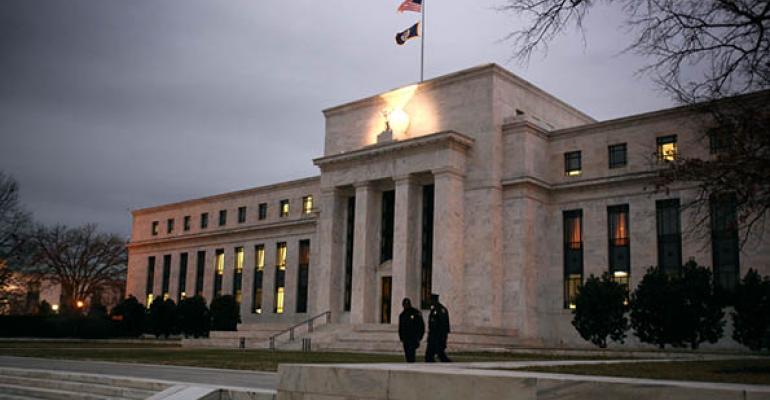Citing a strengthening labor market, moderate economic growth and increasing inflation, the Federal Reserve raised the target range for the benchmark federal funds rate from 0.75 percent to 1.0 percent on Wednesday. In doing so, the Fed took the first steps toward fulfilling its long-promised three rate hikes per year. Only Committee member Neel Kashkari dissented, preferring to maintain the target federal funds range as is.
Industry pros don’t expect the gradual increases to be too disruptive to real estate capital markets.
“There’s no need to be scared just yet. There are three offsetting factors. One, rent growth and NOI growth is quite strong, Two, there is still room in the spreads (and) three, there is still a lot of raised, but undeployed capital waiting to get in,” says Rene Circ, director of research at Costar Portfolio Strategy.
“Everybody knew this increase was coming,” adds Jim Costello, senior vice president at research firm Real Capital Analytics (RCA), adding that January and February investment sales volume was down year-over-year, showing the trend of interest rate increases taking their toll on deal volume. With pricing high and no more room for cap rate compression at this point in the cycle, “what do you do when buying a property? If you don’t want to take a low return, you might not want to do the deal.”
Costello also says he has seen borrowers increasingly opting for variable rate loans in acquisitions, and even in refinancing, a sign of “market pricing to perfection” and “using cheaper debt to pencil a deal.” For some borrowers, taking refinance risk three to five years down the line is preferable for deals done today, he says.
Fed Chair Janet Yellen remained steadfast in pursuing accommodative policy to promote further economic growth, while continuing to highlight economic uncertainty.
“Today's decision also reflects our view that waiting too long to scale back some accommodation could potentially require us to raise rates rapidly, sometime down the road, which in turn could risk disrupting financial markets and pushing the economy into recession,” Yellen said when announcing the decision. “We continue to expect that the ongoing strength of the economy will warrant gradual increases in the federal funds rate, to achieve and maintain our objectives…”
Some members of the commercial real estate industry expect that the Fed will raise rates three to four times this year, including the current increase.
“The question is whether raising interest rates 75 to 100 basis points this year will have an effect on real estate,” says Edward Del Beccaro, senior managing director at commercial real estate services firm Transwestern. Cap rates are expected to rise 50 basis points nationwide by the end of the year, he notes, but the effects may be more muted in core markets including New York, San Francisco and Los Angeles, where cap rates might move only 25 basis points.
Tom Fink, senior vice president with research firm Trepp, calls the current increase an example of “tweaking around the margins,” saying it is not enough to drive the real estate market in any specific direction.
In addition, the “magnitude and pace” of rising cap rates would be likely muted by strong capital inflows to commercial real estate from foreign and domestic institutional sources, according to Spencer Levy, head of research for the Americas at real estate services firm CBRE. “Cap rate increases would be further mitigated if the stimulative growth policies of the Trump administration live up to expectations,” Levy said in a release.
Which property types are exposed?
One sector for which the increase may make things more complicated is retail real estate, CNBC reports.
“Though credit markets have so far remained strong, allowing many retailers to proactively refinance their debt, Moody's warns that rising U.S. interest rates could abruptly change those conditions,” CNBC writers note, citing Moody’s Investor Service data showing that there is $3.7 billion in debt maturing in the sector in the next five years, 30 percent of which is due by the end of 2018.
In the net lease sector, a majority of respondents to NREI’s recent net lease trends research survey indicated that interest rate increases were a top-of-mind consideration in conceptualizing performance this year. Industry experts had the expectation that as rates continue to rise, that could lead to prices cooling within the sector.
And then there’s the multifamily sector, claiming headlines this year for both strong property fundamentals and high property valuations.
Circ notes the top end of the apartment market is “most at risk,” as a result of it displaying the lowest cap rates and least room for compression. “It is also starting to buckle under the new supply pressure,” he says. Circ sees the industrial class as the least at risk at this point, as it has become “a darling of investors, with the lowest cost of capital.”

